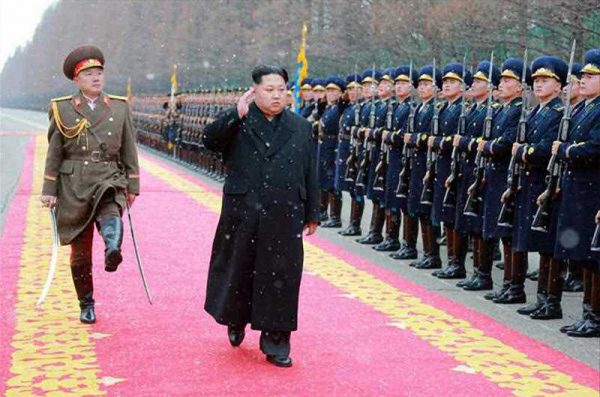While the Kim regime’s siege mentality should not be discounted, the defensive justification for periodic testing serves as a thin legitimising veneer for what are essentially domestic and negotiative drivers for nuclear demonstrations.
Pyongyang already has sufficiently strong conventional deterrence. It has a strong military presence near the demilitarized zone with South Korea and Seoul is within range of a massive array of North Korean artillery. What’s more, North Korea’s soil has not been invaded since the 1950–1953 Korean War. With all this in mind, North Korea’s nuclear weapons look like overkill, suggesting the existence of other driving motivations.
Looking back at North Korea’s second nuclear test in 2009, Evans Revere has retrospectively argued that the test was carried out to buttress nationalist sentiment and pride in the wake of the late Kim Jong-il’s debilitating stroke in 2008. As the then leader-in-waiting, Kim Jong-un lacked leadership experience and such a display of technical achievement provided a stable moral platform for him to assume leadership. The subsequent opposition to the blast from the United States and UN allowed the Kim regime to re-direct domestic focus away from the DPRK’s economic malaise towards foreign enemies.
The following nuclear tests in 2013 and January 2016 can also be seen as technological signals used to reinforce North Korean self-esteem and shore up Kim Jong-un’s credibility. These tests might even be more significant for him since his father’s passing in 2011. Kim Jong-un has to show the general public, as well as Pyongyang’s elite, that he is his own man and not ruling in his father’s shadow.
To understand how the DPRK uses nuclear bravado as a tool to enhance negotiative efficacy — particularly with the United States — Pyongyang’s past behaviour serves as a useful guide.
First, in 1994 Kim Jong-un’s grandfather, Kim Il-sung threatened to process plutonium from spent nuclear reactor fuel rods. This was rewarded by the Agreed Framework — within which North Korea received fuel aid and nuclear proliferation resistant light water nuclear reactors, among other benefits.
Next, after the first nuclear test in 2006, the Kim regime, then led by Jong-il, negotiated a deal with the United States where the DPRK received fuel aid and delisting from Washington’s official list of states that sponsor terrorism. This was in exchange for the DPRK freezing its plutonium-based nuclear program and significant transparency regarding nuclear activities.
Most recently, following Pyongyang’s second nuclear test in 2009 and extensive negotiations, the Kim regime agreed in 2012 to suspend all nuclear and missile tests along with uranium enrichment in return for 240,000 tons of food aid from the United States.
By now, even the most dewy-eyed proponent of eventual North Korean negotiated nuclear disarmament should realise that it is not likely to happen anytime soon. Appeasement of the DPRK by exchanging carrots for denuclearisation progress has not worked, nor have limp wristed UN Security Council sanctions. So how should the United States and other concerned regional states respond?
Nuclear weapons are a tool to substantiate the leadership credentials, legitimacy and moral authority of successive generations of Kim leaders to North Korean citizens and elites. It would be fair to say that nuclear testing and demonstrations of related technology have an innate value to Pyongyang. So, coaxing, cajoling, bribing and coercing the Kim regime will be fiercely resisted.
Still Washington and its regional partners need not sit on their collective hands and do nothing. Even as the UN Security Council meets to decide what punitive action to take, these states can work on convincing the DPRK’s leadership that nuclear antics will not be rewarded in any shape or form, not even with tentative low-level contacts or negotiations. Once Pyongyang realises this, there would be less utility in nuclear and even missile testing.
Despite the hermit kingdom’s Juche rhetoric championing self-reliant autarky, no nation can truly survive utter isolation. By removing Kim Jong-un’s ability to blackmail states into inadvertently sustaining his regime’s survival, the DPRK would be driven into a state of isolation that not even his father or grandfather experienced.
If Kim is convinced that his sole international patron, China, is North Korea’s last and only national umbilical cord, he might be more circumspect about future provocative actions. Being unable to play the United States off against China would limit Kim’s room for strategic manoeuvring, and hopefully lessen his taste for nuclear bravado.
Nah Liang Tuang is an Associate Research Fellow at the Institute of Defence and Strategic Studies, S. Rajaratnam School of International Studies (RSIS), Nanyang Technological University.

